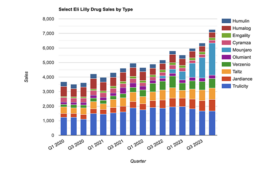
MyoKardia, a clinical stage biopharmaceutical company pioneering a precision medicine approach for the treatment of heritable cardiovascular diseases, announced positive topline data from the first patient cohort of its Phase 2 PIONEER-HCM study of mavacamten in symptomatic, obstructive hypertrophic cardiomyopathy (oHCM) patients. This cohort met the primary endpoint of change in post-exercise peak left ventricular outflow tract (LVOT) gradient from baseline to week 12 as well as key secondary endpoints, including peak oxygen consumption (peak VO2). Based on these results and subject to discussions in the coming months with the U.S. Food and Drug Administration (FDA), MyoKardia is planning for its next study, EXPLORER-HCM, to be a pivotal study. EXPLORER-HCM is expected to initiate by the end of this year.
“We are very encouraged by the observed physiological effects of mavacamten in this study,” said Stephen Heitner, M.D., director of the HCM Clinic at Oregon Health and Science University’s Knight Cardiovascular Institute, and the lead investigator in the PIONEER-HCM study. “These results continue to build the body of evidence linking the mechanistic hypothesis of mavacamten to potential clinical benefit in symptomatic, obstructive HCM patients.”
In this first patient cohort of PIONEER-HCM, 11 patients enrolled and 10 completed the study. A statistically significant improvement was observed in the primary endpoint, change in post-exercise peak LVOT gradient from baseline to week 12 (p=0.002).
After 12 weeks of treatment, all 10 subjects (100%) achieved a reduction in post-exercise peak LVOT gradient from a baseline mean of 125 mmHg. In eight of the 10 subjects, the post-exercise peak LVOT gradient was reduced below the diagnostic threshold for oHCM (≤ 30 mmHg), with the other two patients’ measurements below 50 mmHg. Clinically meaningful improvements (≤ 30 mmHg) in resting LVOT gradient were observed as early as week 2 in nine out of 10 subjects, providing the rationale for the addition of a second, low-dose cohort to the PIONEER study. Additionally, clinically and statistically significant improvements were observed in peak VO2 (p=0.004).
With respect to New York Heart Association Functional Classification, an exploratory endpoint of PIONEER-HCM, improvements from baseline were observed at week 12 (p=0.016), by at least one class in seven patients, with two of these patients improving by two classes.
Mavacamten was generally well-tolerated. One patient with a history of paroxysmal atrial fibrillation experienced a serious adverse event. In order to participate in the study, this patient had discontinued background beta blocker and disopyramide therapy, both of which are indicated for the management of atrial fibrillation. During the study, the patient experienced a recurrent episode of atrial fibrillation and was cardioverted. The patient had another episode of atrial fibrillation and was hospitalized and successfully treated with anti-arrhythmic therapy. The patient elected to stop study drug at week 4. All other adverse events (AEs) were mild to moderate, and a majority of the AEs were deemed to be unrelated to study drug.
After reviewing safety data from PIONEER-HCM, the Independent Data Monitoring Committee (IDMC) recommended continuation of the study.
In the coming months, MyoKardia intends to discuss the mavacamten clinical development plan in an End-of-Phase 2 meeting with the FDA and seek feedback on the potential for EXPLORER-HCM, its next study of mavacamten in symptomatic oHCM, to be a pivotal study with peak VO2 as the primary endpoint. The key inclusion and exclusion criteria for EXPLORER-HCM are anticipated to be similar to those for PIONEER-HCM, and the Company expects to enroll between 200 and 250 patients in EXPLORER-HCM. The Company expects to initiate EXPLORER-HCM before the end of this year.
Filed Under: Drug Discovery




